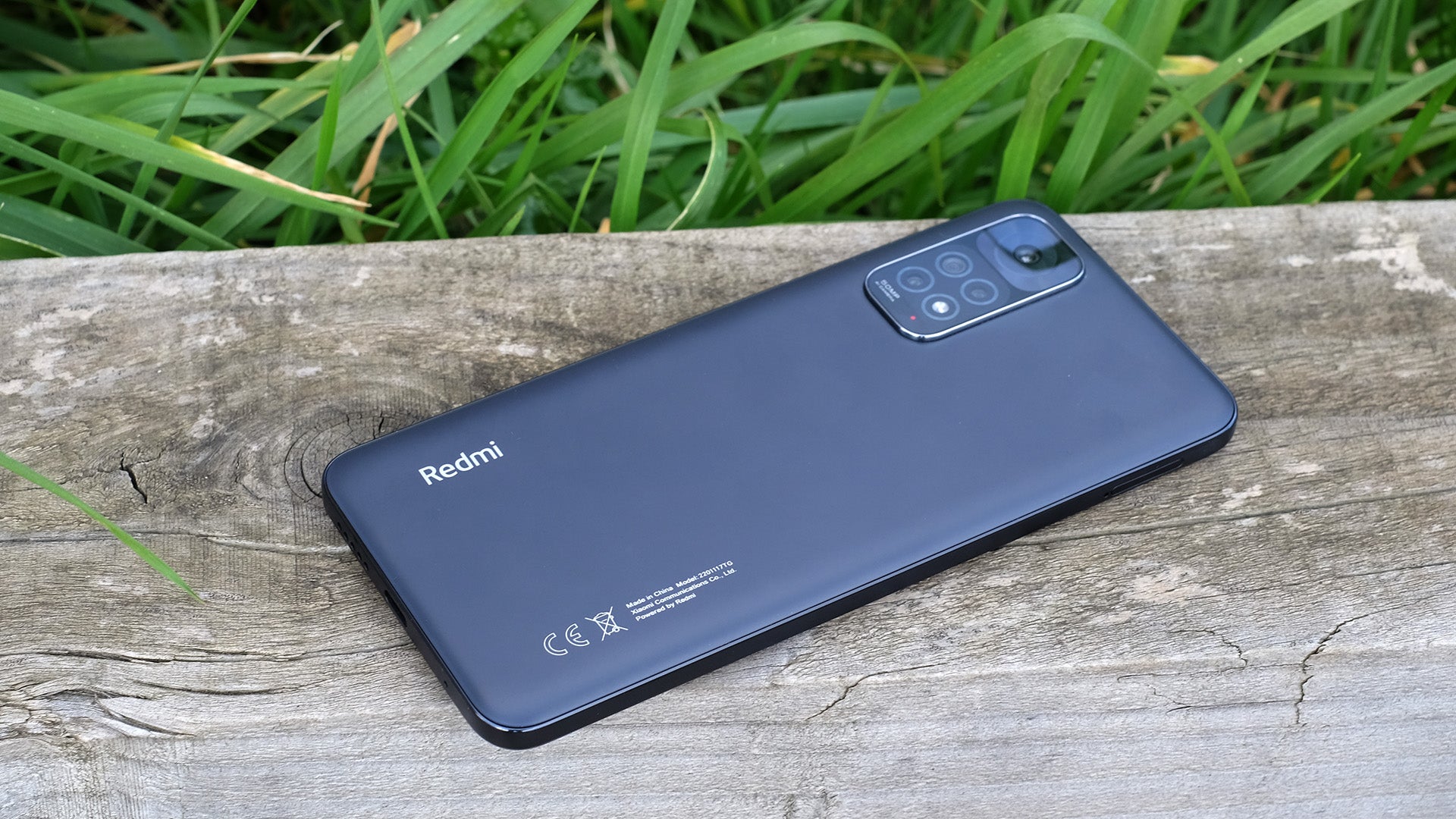Verdict
We get little progress this year, but the Redmi Note 11 makes a lot of sense if you value screen quality and battery life over an ability to play tough games like Fortnite well.
Pros
- Vibrant OLED screen
- Long battery life
- Stereo speakers
Cons
- Mediocre gaming performance
- Camera stumbles with trickier scenes
- No 5G mobile internet
Availability
- UKRRP: £199.99
- USAunavailable
- EuropeTBC
- Canadaunavailable
- AustraliaTBC
Introduction
The Xiaomi Redmi Note 11 is a basic Android phone with one stand-out feature – a Full HD OLED screen. This is great for watching YouTube or Netflix in a darker room, letting the ultra-deep contrast of the tech shine.
Its solid stereo speakers are also beneficial for video. They are fairly loud and clear, not too far off the performance of Xiaomi’s phones from a level up.
The Xiaomi Redmi Note 11’s battery life is great too, outlasting almost all of the best phones around. Great screen, solid speakers, low-maintenance battery: that is a good combo.
Other than this, the Xiaomi Redmi Note 11 offers nothing too exciting. It doesn’t have 5G, the camera array is not quite as strong as that of the 4G version of the Samsung Galaxy A22. And the Qualcomm Snapdragon 680 is not a great performer.
It struggles to play games like Fortnite, and there is a slight but noticeable hit to the feel of Android in general. The Redmi Note 11 is not a pain to use but is slower to respond than the step-up Note 11 Pro 5G. Its relative lack of performance nibbles, rather than bites, but is something to bear in mind when older 4G big hitters like the Poco X3 Pro are intermittently available at a similar price.
Design and Screen
- Plain inoffensive plastic shell
- Mid-size phone, perfect if you don’t want a huge handset
- Stereo speakers
The Xiaomi Redmi Note 11 is an unassuming phone. As if to stress the point, Xiaomi sent me the most innocuous finish available, Graphite Grey.
There’s no dazzling effect to the back. It’s just a slightly rounded sheet of plastic with a matt top later. It feels smooth, perhaps a little cheap: clearly plastic, not glass. This simply means there’s even less of a reason not to use the bundled silicone case.
Xiaomi also makes Redmi Note 11s with lightly sparkly blue and purple/green metallic finishes, should the grey here seem just too dull for your tastes.
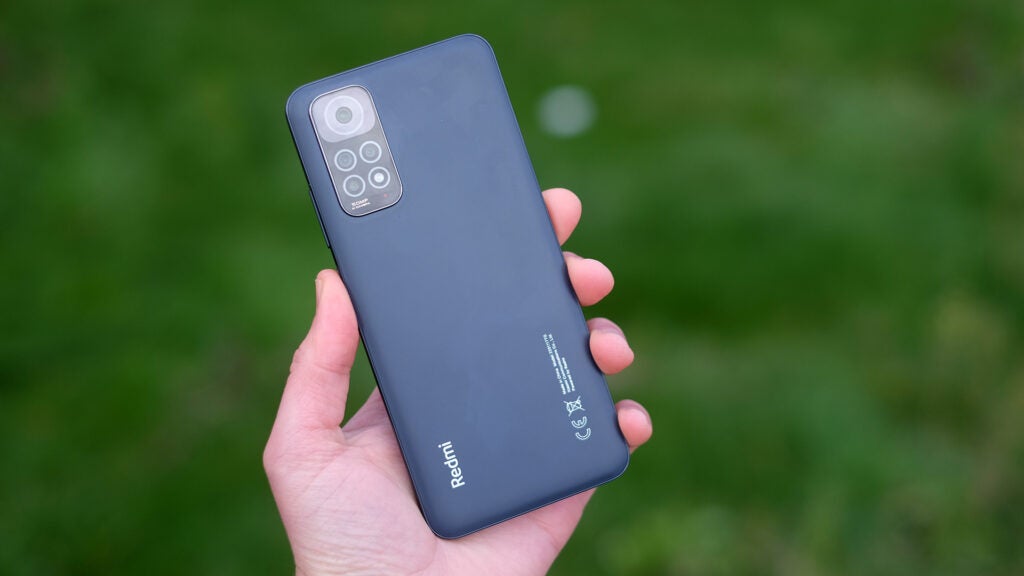
This is a mid-size phone with a 6.43-inch screen, making its appeal a lot wider than that of Xiaomi’s chunkier 6.67-inch performance phones from last year. At 8.1mm it’s not particularly thick, and the 179g weight is diligently moderate.
Like last year’s Note 10, Xiaomi wants to reel you in with OK pricing, so the design’s job is not to put you off in the process.
There are some more notable parts to the Xiaomi Redmi Note 11 hardware, though. It has an IR blaster, which you probably won’t use but is neat nevertheless. This lets the phone act as a universal remote with the help of the Mi Remote app.
The Xiaomi Redmi Note 11’s speakers are also above average. There’s a driver on the phone’s bottom, another that seems to throw sound out of the top and a thin band above the screen.
In the best stereo arrays the two speakers sound roughly as powerful as each other. You don’t get that here. The Xiaomi Redmi Note 11’s bottom speaker is significantly richer than the top one, but the pair still gets you a proper stereo effect and output strong enough to punch through a good amount of ambient sound.
Speakers are a Redmi Note series strength. And while the Note 11 Pro’s are more powerful still, delivering more bass, the Note 11’s do not sit too far behind.
The fingerprint scanner lives in the power button on the side. It’s the standard place for finger pads in cheaper phones, but this one has solid ergonomics and is nippy.
You get two SIM slots and a separate microSD card slot in the SIM tray too, which should please the budget power user crowd.
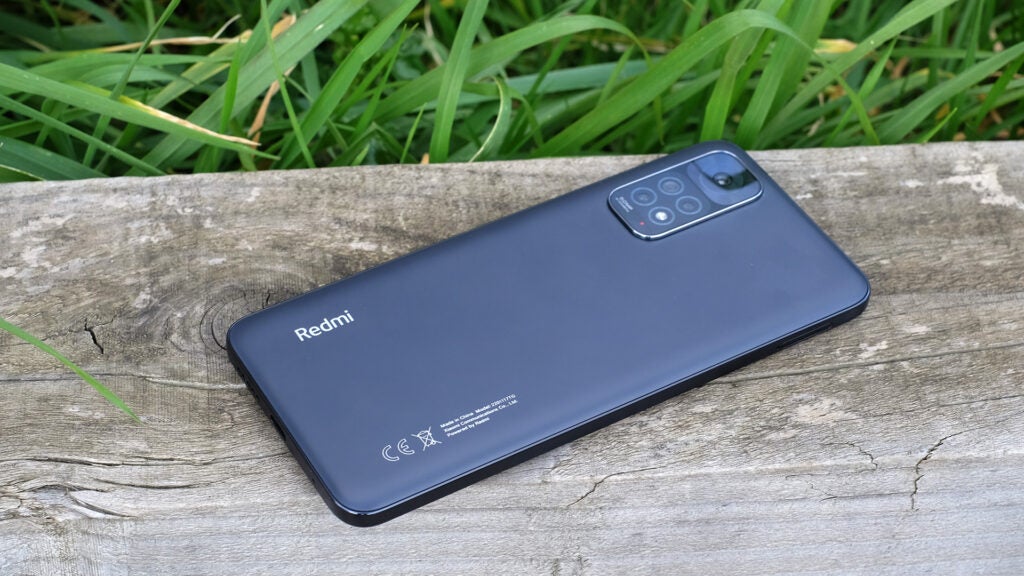
The Xiaomi Redmi Note 11’s screen is much like last year’s Redmi Note 10’s, at least in terms of core tech.
You get a mid-size 6.43-inch AMOLED display with a 90Hz refresh rate, although my phone was set to a 60Hz refresh out of the box. Xiaomi phones from a step up offer even more rapid 120Hz refresh rates. However, 90Hz still looks smoother than 60Hz, and presumably must be less of a battery drain.
90Hz: unfashionable, but perhaps sensible?
Resolution and contrast are the real highlights of the Xiaomi Redmi Note 11 display. 5G phones at this price typically have 720p screens less sharp than this 2400 x 1080 pixel one. Samsung’s 4G A22 has a comparable display, but the phone costs 15% more.
The Xiaomi Redmi Note 11 has a strong screen, one with wide gamut colour and perfect OLED blacks. I found its colour too strong to begin with, as while the default Vivid colour profile claims to alter colour handling to suit what is displayed on-screen, interface app icons still appear super-saturated.
Don’t like it? The “Standard” colour mode brings everything back down to the more measured tones you might see in, say, an iPhone 13.
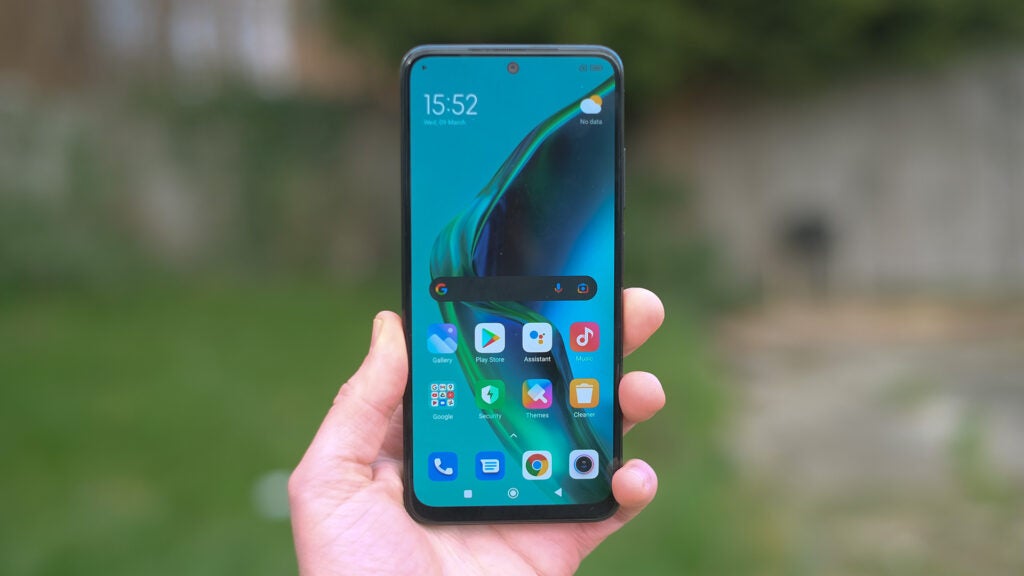
The Xiaomi Redmi Note 11 does not appear to support HDR video, which is a shame when the actual display panel is clearly much more HDR-capable than most TVs. But HDR on a phone? It’s ultimately no great loss.
This does make you wonder exactly where you’d see the claimed “1000 nit” peak brightness, if not in HDR video. In bright sunlight the Xiaomi Redmi Note 11 switches to its high brightness mode, which tops out at around 700 nits.
The phone also plays with its mid-tones in direct sunlight, lifting up the darker parts of the picture to maximise visibility. It’s a great feature to have in a cheap Android phone. However, it does not seem to engage in the camera app, which is a shame. I’ve also found the Xiaomi Redmi Note 11 screen goes a bit too dim in certain indoor conditions, but just manually change the brightness level and it will stay there.
Performance
- Solid MIUI interface
- Just OK general performance
- Poor gaming performance
The Xiaomi Redmi Note 11’s software looks just like that of Xiaomi’s more expensive phones. It runs Android 11 and MIUI, the company’s custom software layer.
MIUI does not do anything too bold. You can have it with or without an app drawer, and the visual design is similar to previous versions. Swipe down on the right side, you get the feature toggles for Wi-Fi, the torch and so on. You swipe from the left to see notifications. I’m not a big fan of this style, but it’s a bit less cumbersome in the Xiaomi Redmi Note 11 than a larger-screen Android as reaching the left side of the display is less of a stretch for your thumb.
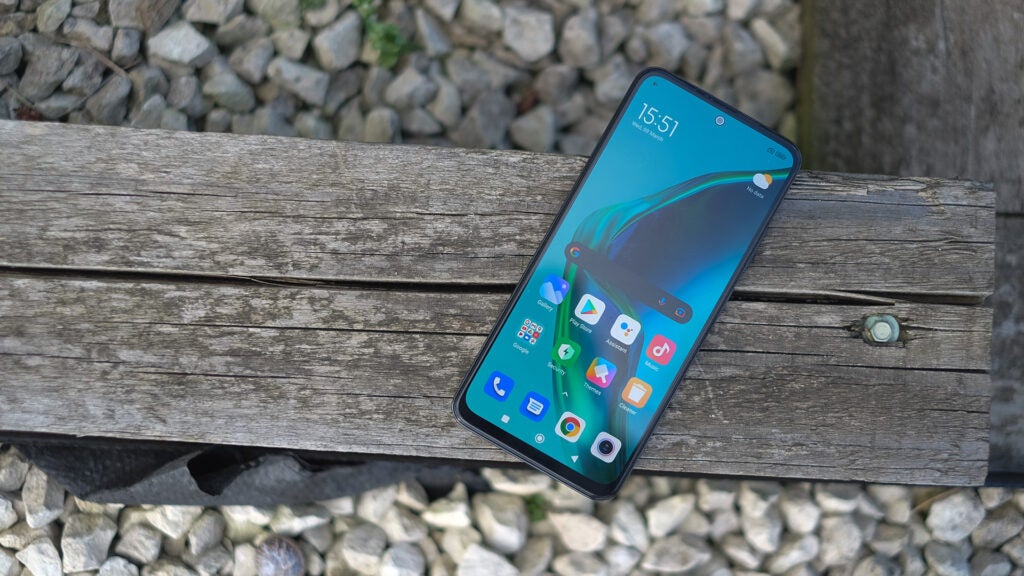
The Xiaomi Redmi Note 11’s interface looks much like that of the more expensive Xiaomis but it does not feel quite the same. It runs at a slower tempo, with a noticeable drop in responsiveness compared to the Xiaomi Redmi Note 11 Pro.
App loads are a little slower, there’s sometimes a brief pause before the interface screen populates. While phone processors have developed rapidly over the years, there remains a slight performance deficit when you reach entry-level performance phones like the Xiaomi Redmi Note 11.
I don’t find this annoying as such. While this phone is slightly slower than step-up models, it is consistently slower — there aren’t glaring inconsistencies that make it seem as though you have to wade through the interface.
Do consider this if you are upgrading from an old flagship phone like, say, the OnePlus 6. This phone is highly likely to seem a straight downgrade in performance.
It is thanks to the Qualcomm Snapdragon 680, a processor much less impressive than what we’ve seen in other Xiaomi 4G phones from the last 18 months. Looking into the processor’s capabilities, the Xiaomi Redmi Note 11 actually hits several of its ceilings.
The Snapdragon 680 only supports displays of 1080p at up to 90Hz, there’s no support for a separate 5G modem, no Wi-Fi 6. It doesn’t support HDR video playback — the likely reason a screen that seems capable of it on the surface doesn’t have HDR.
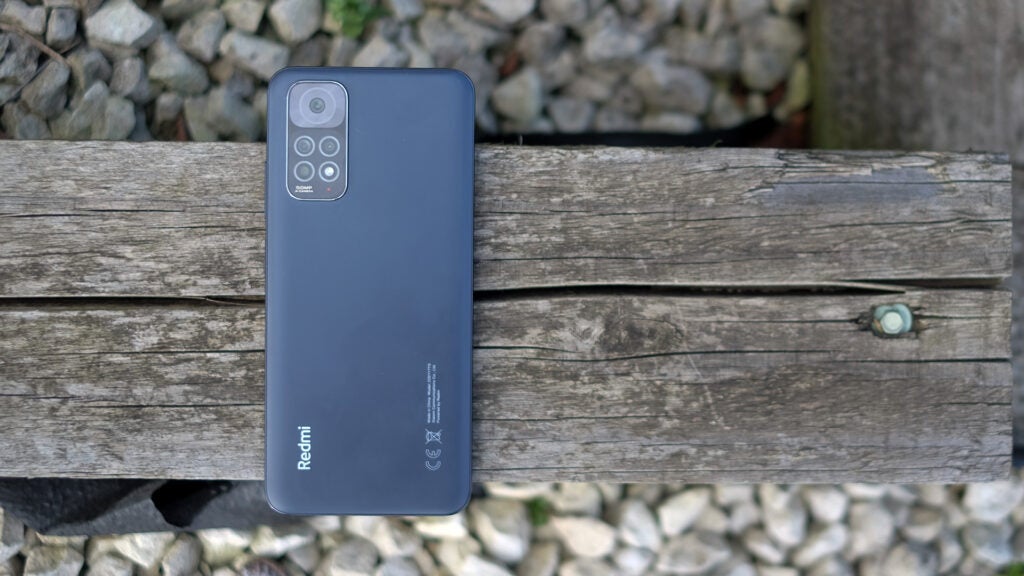
If you wait for one of Xiaomi’s regular (and often hot) sales, you’ll be able to pick up a more powerful phone for similar money. But that only applies if you plan on buying the Xiaomi Redmi Note 11 outright, of course.
Gaming is where the limits are felt the most keenly. Fortnite does not run well on the Xiaomi Redmi Note 11. It cannot remotely hold onto a solid 30fps at the default graphics settings, and has crashed on me several times — often hanging before or during the dropship part at the start of a game.
The phone is not officially supported by Fortnite publisher Epic at present, and stability may improve in the future, as the Snapdragon 680 processor is used in several notable phones including the Realme 9i and Samsung Galaxy A23. It still won’t run particularly well even after optimisations, though. The limited 4GB RAM in my test phone likely does not help.
ARK: Survival Evolved runs poorly when maxed out, and even at Medium graphics there are clear frame rate drops as you run through the environment.
The Xiaomi Redmi Note 11 scores 444 points in 3DMark’s Wild Life benchmark, a dismal score and only half that of the similarly priced Oppo A54 5G. That phone has the Snapdragon 480 5G, a chipset that sounds less powerful than the Redmi’s Snapdragon 680, but is not.
This phone is also slower than its predecessor: Qualcomm’s naming convention strikes again. The old Redmi Note 10’s Snapdragon 678 is a little more powerful than this phones’ Snapdragon 680, which you would never guess.
In better news, the Xiaomi Redmi Note 11 never seems to get hot — perhaps not too surprising given the phone’s power. That said, 3D Mark’s Wild Life stress test shows the phone goes into a throttled mode after 10 minutes at full pelt, dipping to 50-60% of its peak performance.
Camera
- Fairly weak HDR
- Poor low-light photo
- Slightly, but not glaringly, slow to shoot
The Xiaomi Redmi Note 11 has four rear cameras. You get a 50-megapixel main camera, an 8MP ultra-wide, a 2MP macro and a 2MP depth camera.
Those last two are typical filler cameras. Close-up macro images are pretty bad and fall apart when you view them on a display larger than the phone’s own screen.
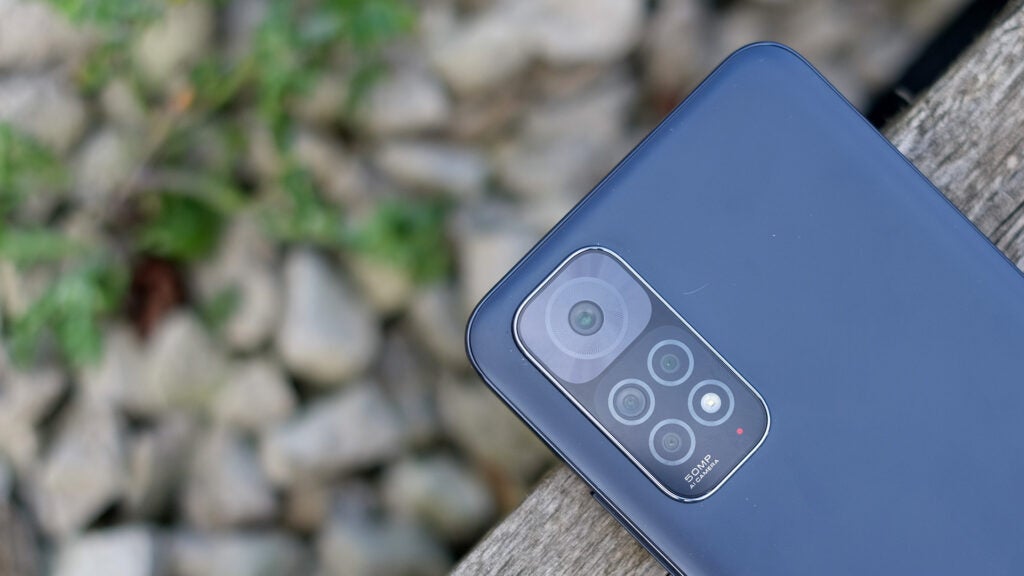
The Xiaomi Redmi Note 11’s main camera uses a Samsung sensor that, in typical Samsung fashion, takes a currently trendy resolution (50MP) and brings it down to earth by shoehorning it into fairly low-end hardware. This is a small 1/2.76-inch sensor, leading to sensor pixels that measure just 0.64 microns. These things are tiny.
However, for the most part I’m reasonably happy with the results. Some of the issues I had with the step-up Redmi Note 11 Pro 5G camera are here too, but they stick out less in a sub-£200 phone.
Shoot in good lighting and the Xiaomi Redmi Note 11 typically puts out photos with a warm…
